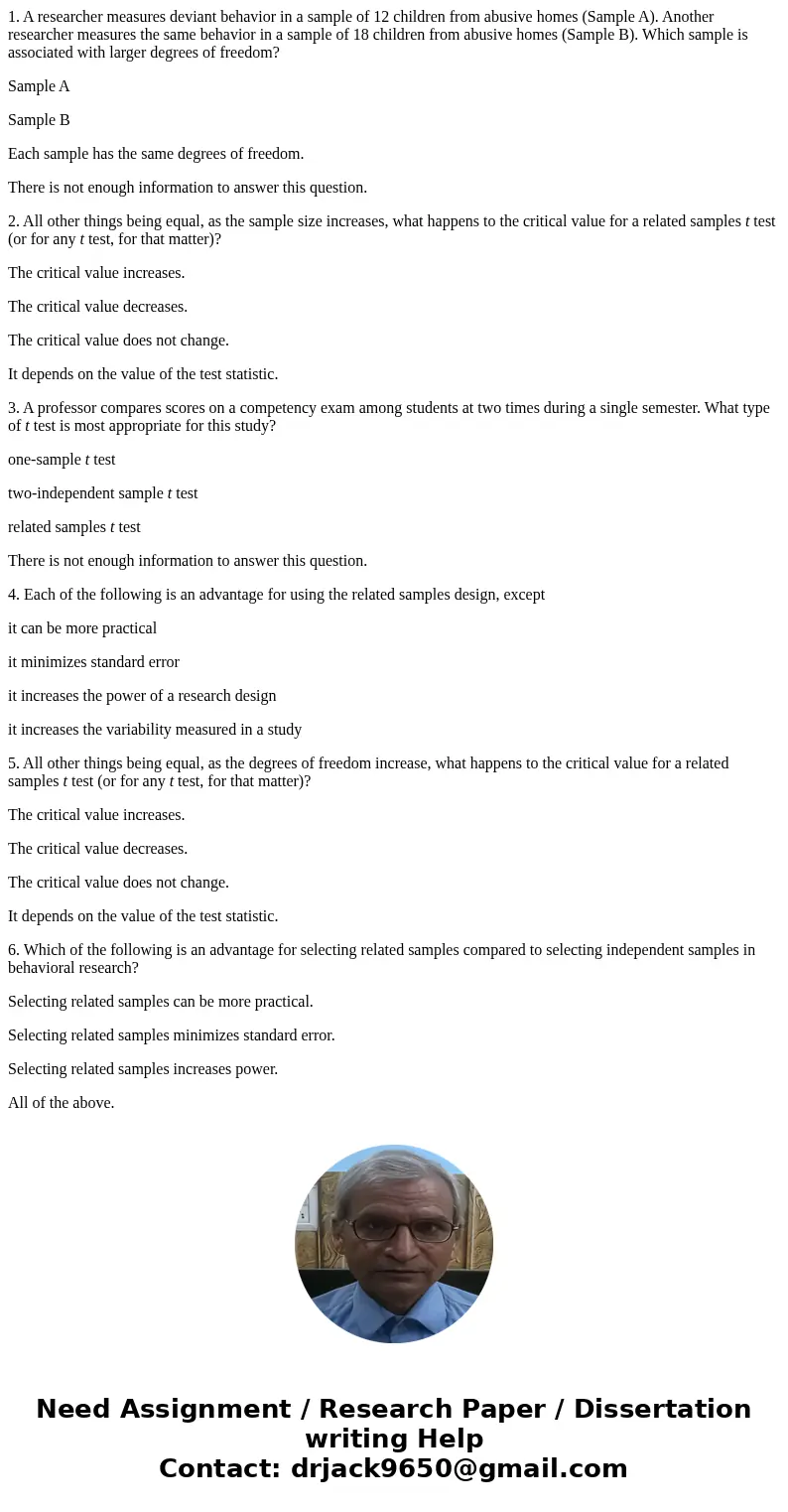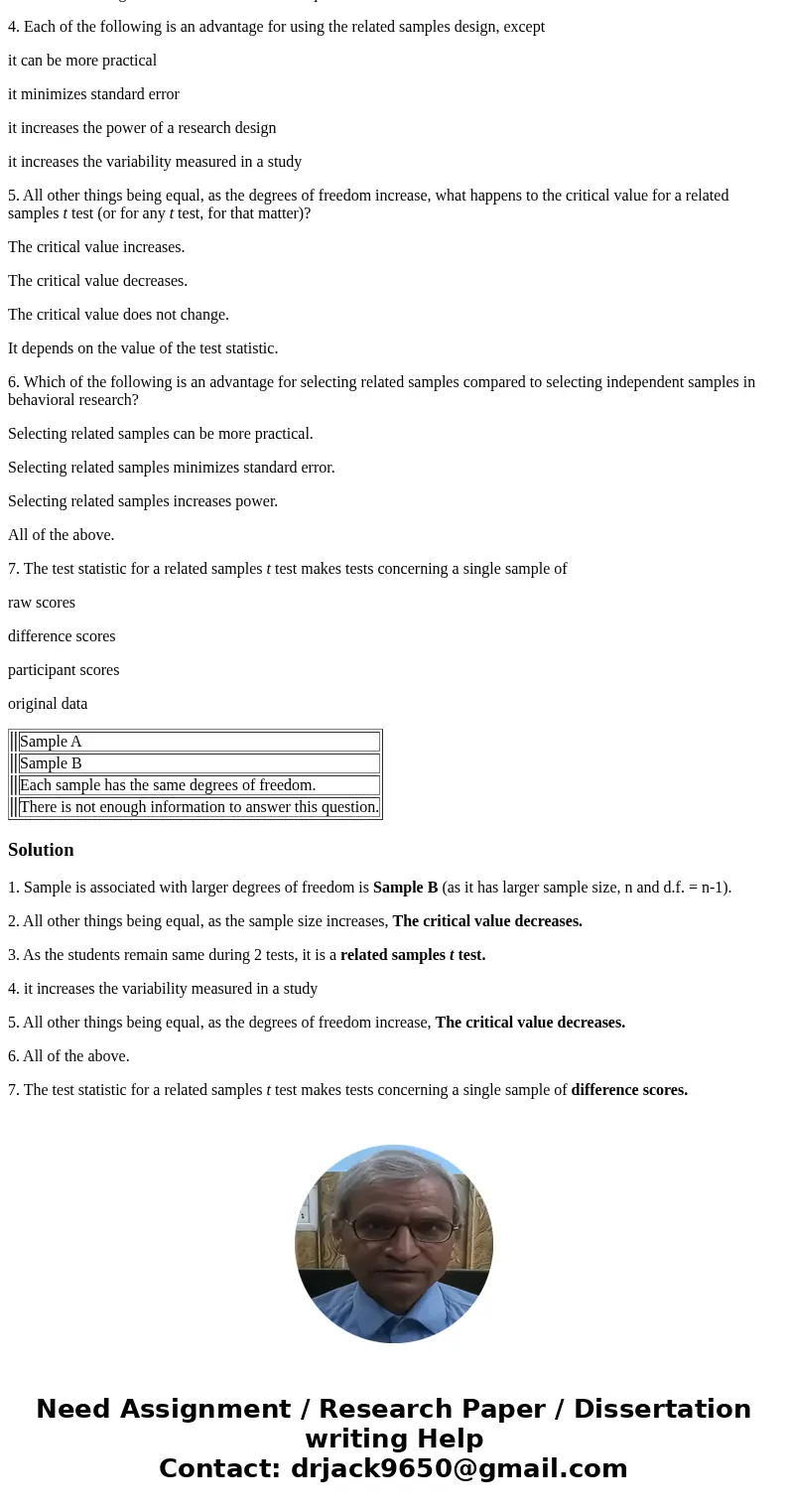1 A researcher measures deviant behavior in a sample of 12 c
1. A researcher measures deviant behavior in a sample of 12 children from abusive homes (Sample A). Another researcher measures the same behavior in a sample of 18 children from abusive homes (Sample B). Which sample is associated with larger degrees of freedom?
Sample A
Sample B
Each sample has the same degrees of freedom.
There is not enough information to answer this question.
2. All other things being equal, as the sample size increases, what happens to the critical value for a related samples t test (or for any t test, for that matter)?
The critical value increases.
The critical value decreases.
The critical value does not change.
It depends on the value of the test statistic.
3. A professor compares scores on a competency exam among students at two times during a single semester. What type of t test is most appropriate for this study?
one-sample t test
two-independent sample t test
related samples t test
There is not enough information to answer this question.
4. Each of the following is an advantage for using the related samples design, except
it can be more practical
it minimizes standard error
it increases the power of a research design
it increases the variability measured in a study
5. All other things being equal, as the degrees of freedom increase, what happens to the critical value for a related samples t test (or for any t test, for that matter)?
The critical value increases.
The critical value decreases.
The critical value does not change.
It depends on the value of the test statistic.
6. Which of the following is an advantage for selecting related samples compared to selecting independent samples in behavioral research?
Selecting related samples can be more practical.
Selecting related samples minimizes standard error.
Selecting related samples increases power.
All of the above.
7. The test statistic for a related samples t test makes tests concerning a single sample of
raw scores
difference scores
participant scores
original data
| Sample A | ||
| Sample B | ||
| Each sample has the same degrees of freedom. | ||
| There is not enough information to answer this question. |
Solution
1. Sample is associated with larger degrees of freedom is Sample B (as it has larger sample size, n and d.f. = n-1).
2. All other things being equal, as the sample size increases, The critical value decreases.
3. As the students remain same during 2 tests, it is a related samples t test.
4. it increases the variability measured in a study
5. All other things being equal, as the degrees of freedom increase, The critical value decreases.
6. All of the above.
7. The test statistic for a related samples t test makes tests concerning a single sample of difference scores.


 Homework Sourse
Homework Sourse